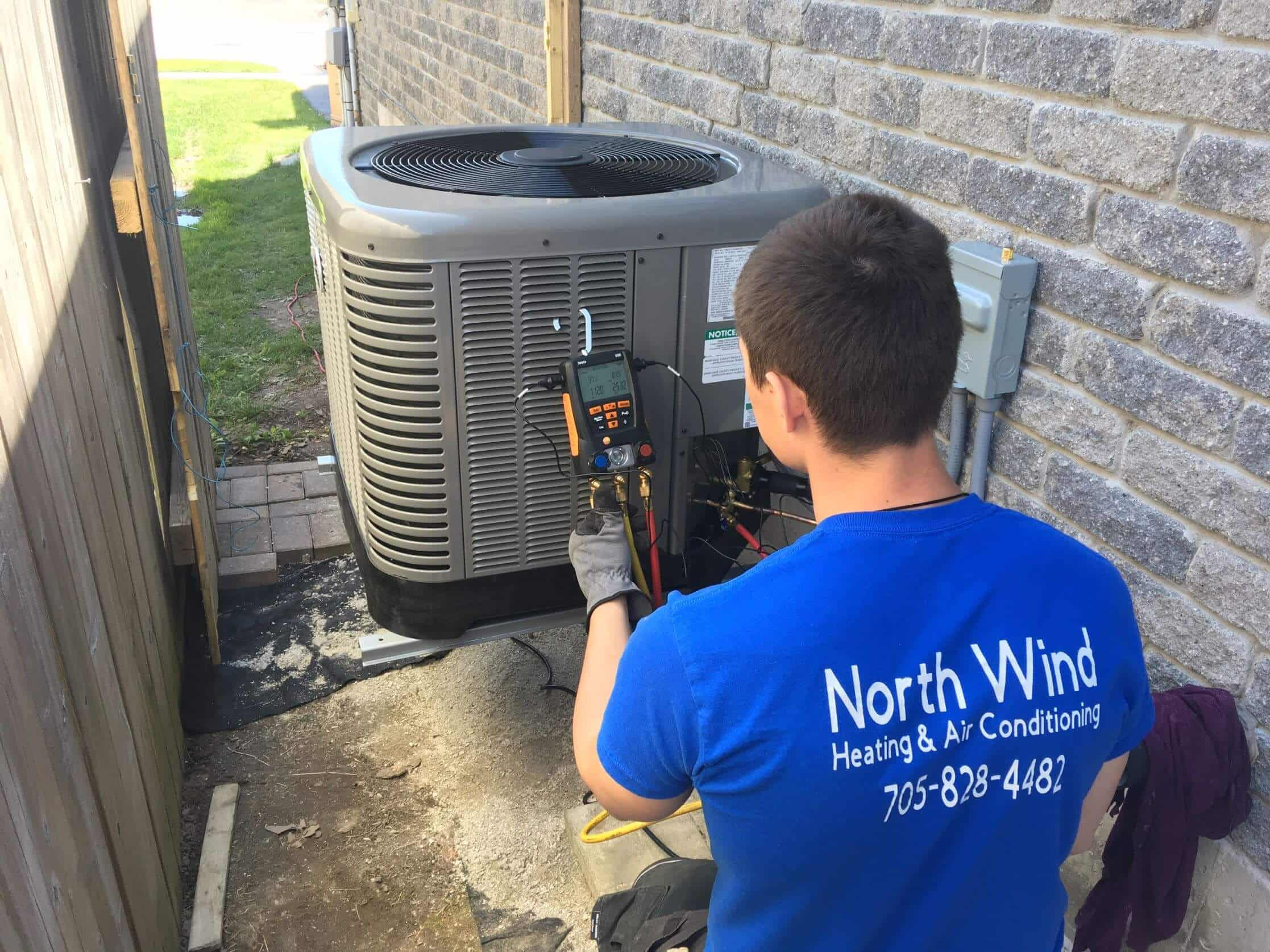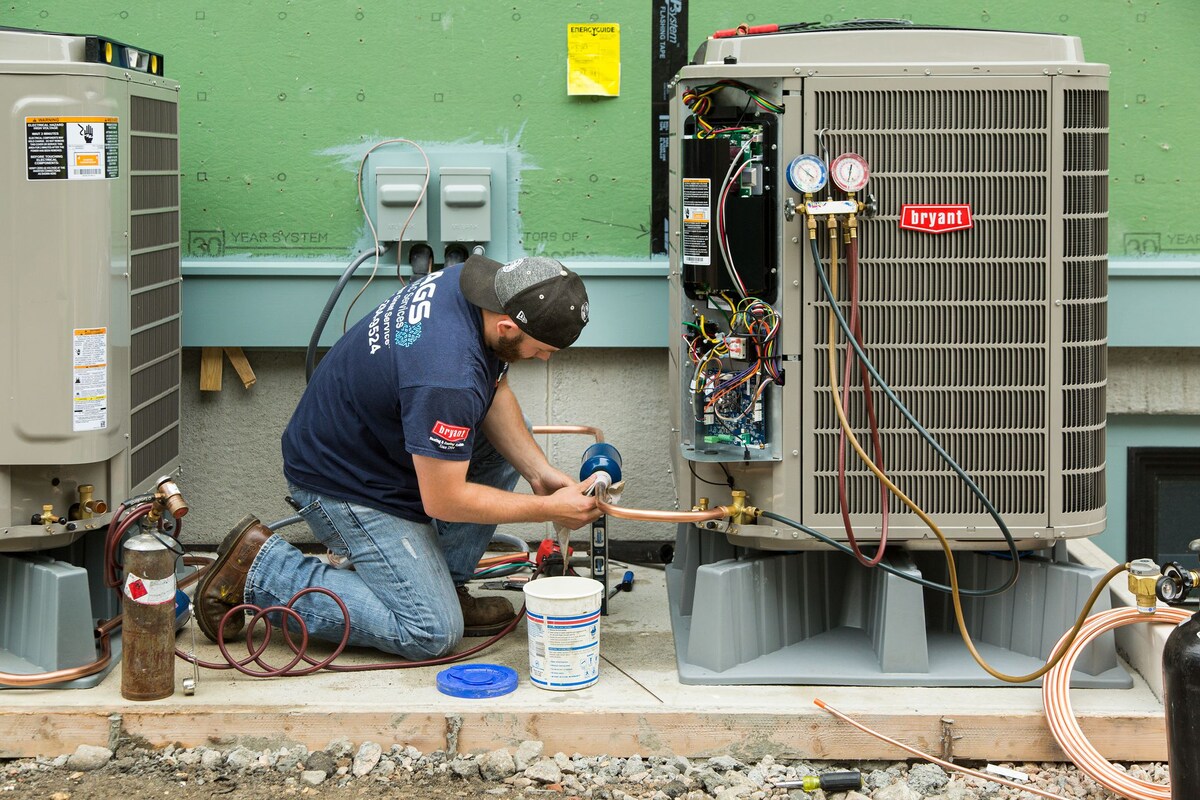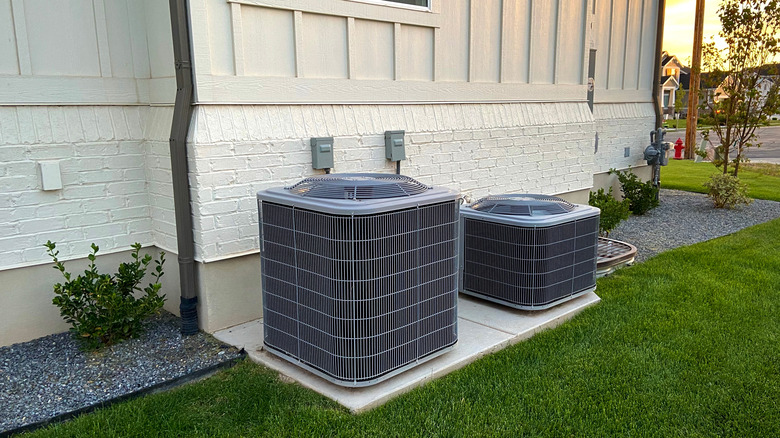How Much Does It Cost To Fix Central Air

Summer heat waves can be unbearable, and a failing central air conditioning system is the last thing any homeowner wants to deal with. The immediate question that pops into mind is: How much is this going to cost me? Before you panic and call for professional help, let's walk through a systematic approach to troubleshooting the problem and potentially saving yourself some money. Many issues can be identified and sometimes even resolved with a little knowledge and a few simple checks. This guide will empower you to understand your system and make informed decisions.
The Case of the Lukewarm Air: A Common AC Issue
One of the most frequent complaints is that the AC is running, but the air coming from the vents isn't as cold as it should be, or it's just not cooling the house adequately. This can stem from a number of sources, ranging from a simple fix to a more complex problem requiring professional expertise. We'll break down the diagnostic process step-by-step.
Step 1: Gathering Initial Information and Safety First
Before you start poking around, remember safety is paramount. Turn off the entire AC system at the thermostat and the breaker. This will minimize the risk of electrical shock. Once you have the system powered down, consider the following questions:
- When did you last change the air filter? (A dirty filter is a prime suspect.)
- Have you noticed any unusual noises coming from the indoor or outdoor unit? (Grinding, hissing, or banging sounds are red flags.)
- Are there any visible signs of damage to the outdoor unit? (Bent fins, debris accumulation, or oil leaks.)
- Is the system cooling better at night than during the day? (This could indicate issues with insulation or sun exposure.)
Step 2: The No-Tools Inspection: Easy Checks You Can Perform
These initial checks require no tools and can often pinpoint simple problems. Perform these checks before calling a professional.
Check the Thermostat
Start with the obvious. Ensure the thermostat is set to COOL mode and the temperature is set lower than the current room temperature. Is the fan set to "ON" or "AUTO?" Leaving it on "ON" will circulate air constantly, but it won't necessarily be cooled air if the compressor isn't running. Set it to "AUTO" for the most efficient cooling.
Inspect the Air Filter
This is the most common culprit. A dirty air filter restricts airflow, making the system work harder and reducing its cooling capacity. Locate the filter (usually in the return air vent or near the indoor unit) and remove it. Hold it up to the light. If you can barely see through it, it's time for a change. Replace it with a new filter of the correct size and MERV rating (check your system's manual or the old filter for specifications). A new filter can cost anywhere from $5 to $20, depending on the type and brand.
Check the Outdoor Unit (Condenser)
Visually inspect the outdoor unit. Remove any debris, such as leaves, grass clippings, or branches, that may be blocking airflow around the unit. The unit needs ample space to exhaust heat. Ensure that shrubs and plants are trimmed back at least two feet from the unit. Look for obvious signs of damage, like bent or crushed fins. Do not attempt to straighten bent fins yourself at this stage. That's a job for a professional with specialized tools.
Inspect Supply Vents
Walk through your home and check each supply vent to ensure that it is open and not blocked by furniture, rugs, or drapes. Closed or obstructed vents restrict airflow and can reduce overall cooling efficiency.
Step 3: Basic Tools Inspection: Checks Requiring Simple Equipment
If the no-tools checks don't reveal the problem, you can move on to checks that require some basic tools. Remember to turn off the power to the system before performing any of these checks.
Clean the Condenser Coils (Carefully!)
Over time, the condenser coils (the metal fins on the outside of the outdoor unit) can become coated with dirt, dust, and debris, reducing their ability to dissipate heat. You can clean them using a garden hose with a gentle spray nozzle. Do not use a pressure washer, as it can damage the delicate fins. Spray the coils from the inside out to flush out any accumulated debris. Be careful not to bend the fins. You can also purchase a specialized fin comb to straighten bent fins, but proceed with caution. A fin comb will cost you about $10-20.
Check the Condensate Drain Line
The condensate drain line carries away the water that condenses during the cooling process. If this line becomes clogged, water can back up and trigger a safety switch that shuts down the system. Locate the drain line (usually a PVC pipe near the indoor unit) and check for any obstructions. You can try clearing the line with a wet/dry vacuum or a stiff wire. Be gentle to avoid damaging the pipe. You can also pour a cup of white vinegar down the drain line to help dissolve any algae or mineral buildup. A wet/dry vacuum can cost anywhere from $50-$200 and a stiff wire might cost $5-$10.
Test the Capacitor (Proceed with Extreme Caution!)
This step involves working with electricity and should only be attempted if you have experience working with electrical components. If you are not comfortable, skip this step and call a professional. The capacitor is a small, cylindrical component inside the outdoor unit that helps start the motor. A faulty capacitor is a common cause of AC problems. To test the capacitor, you will need a multimeter capable of measuring capacitance. Disconnect the power to the unit before opening it. Carefully discharge the capacitor with an insulated screwdriver (search for instructions online for safely discharging a capacitor). Remove the capacitor and test it with the multimeter. If the reading is significantly lower than the value printed on the capacitor, it needs to be replaced. A new capacitor can cost between $20 and $100, depending on its size and type.
Step 4: When to Call a Professional HVAC Technician
If you've performed all the checks above and the AC is still not cooling properly, it's time to call a qualified HVAC technician. There are certain problems that require specialized tools, knowledge, and training to diagnose and repair safely.
Here are some situations where professional help is necessary:
- Refrigerant Leaks: Refrigerant is essential for the cooling process. If you suspect a leak (you might notice a hissing sound or ice buildup on the coils), do not attempt to handle the refrigerant yourself. It's illegal and dangerous. A professional has the equipment to locate and repair leaks and recharge the system properly.
- Compressor Problems: The compressor is the heart of the AC system. If it's not working, the system won't cool. Diagnosing and repairing compressor issues requires specialized tools and expertise.
- Electrical Issues: If you suspect an electrical problem (e.g., tripped circuit breaker, burnt wires), do not attempt to troubleshoot it yourself unless you are a qualified electrician. Electrical work can be extremely dangerous.
- Frozen Evaporator Coils: Frozen coils can be caused by low refrigerant, restricted airflow, or a faulty blower motor. A technician can diagnose the underlying cause and repair it.
- You've tried everything and nothing works: Sometimes, the problem is simply too complex to diagnose without professional equipment and training.
Understanding Potential Costs of Professional Repairs
The cost of professional AC repairs can vary widely depending on the nature of the problem, the age and type of your system, and your geographic location. Here's a general overview of potential costs:
- Service Call Fee: Most HVAC technicians charge a service call fee (usually between $75 and $150) just to come to your home and diagnose the problem.
- Refrigerant Recharge: If your system is low on refrigerant, the technician will need to find and repair the leak and then recharge the system. This can cost between $200 and $800, depending on the type of refrigerant and the amount needed.
- Capacitor Replacement: As mentioned earlier, a capacitor replacement can cost between $20 and $100 for the part itself, but the labor cost can add another $50 to $150.
- Compressor Replacement: Replacing the compressor is a major repair and can cost between $1,000 and $3,000.
- Evaporator Coil Replacement: Replacing the evaporator coil can also be a costly repair, ranging from $800 to $2,500.
- Condenser Fan Motor Replacement: The part itself ranges from $100-$300, with another $100-$200 for labor.
It's always a good idea to get multiple quotes from different HVAC technicians before committing to any repairs. Be sure to ask for a detailed explanation of the problem and the proposed solution, as well as a breakdown of the costs. Ask if the quoted work has any warranty and for how long.
Preventive Maintenance: Avoiding Costly Repairs
The best way to avoid costly AC repairs is to perform regular preventive maintenance. Here are some tips:
- Change the air filter regularly (every 1-3 months).
- Clean the condenser coils annually.
- Schedule a professional tune-up every year. A tune-up typically includes inspecting the system, cleaning the coils, checking the refrigerant level, and lubricating moving parts.
- Keep the area around the outdoor unit clear of debris.
- Consider a service contract with a reputable HVAC company. These contracts often include regular maintenance and discounted repair costs.
By following these steps, you can troubleshoot common AC problems, potentially save money on repairs, and keep your system running efficiently for years to come. Remember, when in doubt, always consult a qualified HVAC technician. Your comfort and safety are worth it.










